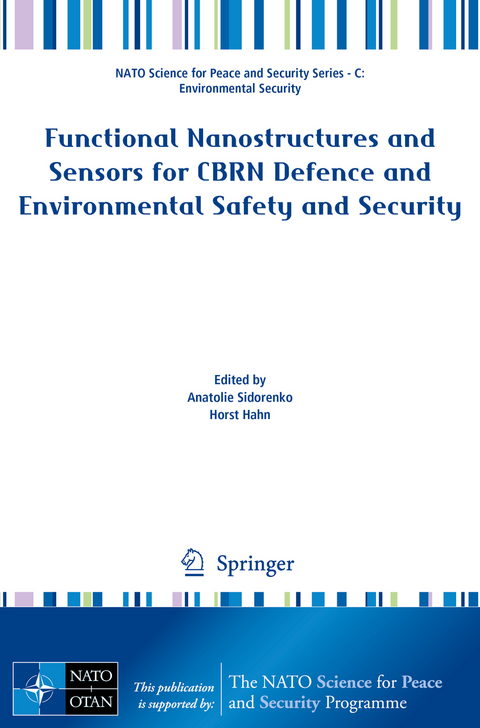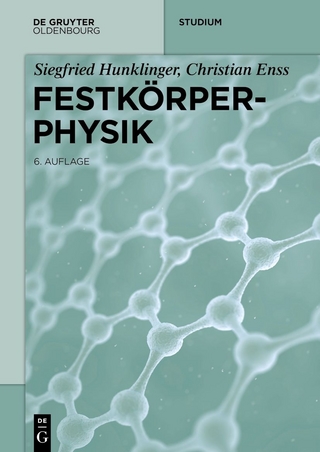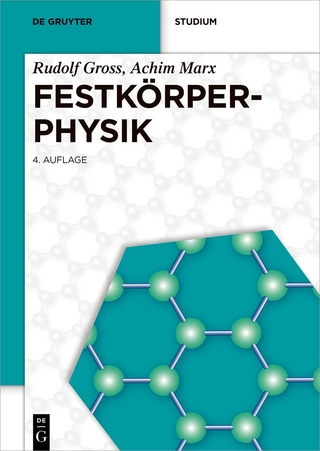
Functional Nanostructures and Sensors for CBRN Defence and Environmental Safety and Security
Springer (Verlag)
978-94-024-1911-5 (ISBN)
Accordingly, the main goal of this book is to bring together experts (theorists, experimentalists, engineers and technologists) for an extensive discussion covering: novel principles for functional nanostructures and detector fabrication and implementation, the development of novel technologies for the deactivation of CBRN agents, their experimental realization and their application in novel monitoring and control systems, and technological processes for soil and water remediation, with a view to environmental protection and defence against CBRN-based terrorism.
In keeping with the book’s main goal, the following topics are highlighted and discussed:
- Sensors and detectors - detection of chemicals, principles of “artificial nose” and chemical “micro-lab on a chip” design, surface and underground water quality monitoring systems, molecular electronics, superconducting electronic devices, quantum detectors and Qubits.
- Environmental protection and CBRN - detection of infrared, microwave, X-ray and terahertz radiation. Principles for novel IR-, UV-, and Terahertz-wave devices for the detection of low-contrast objects.
- Novel technological processes for CBRN destruction and deactivation.
All these topics are strongly interrelated, both with regard to fundamental aspects and to fabrication and implementation technologies; in addition, they are highly promising for application in novel functional devices, computer logics, sensing and detection of low-concentration chemicals, weak and extremely weak magnetic and microwave fields, infrared and ultraviolet radiation. Given its scope, the book will be a useful and interesting guide for a broad readership of engineers, scientists, PhD students and experts in the area of defence against environmental terrorism.
Printing as a technique for sensors with integrated electronics.- Development of policy and strategy of the nanomaterials for environmental safety/security by radioactive/nuclear agents at critical infrastructure facilities in Albania.- Boron10 isotope based neutron radiation semiconductor sensors.- Transmission of two measuring signals by an invariant property of three wire communication lines.- IR-sensors and detectors of irradiation based on metal foils.- Magnetoelectric effect driven by reversible surface chemistry and bulk ion-exchange.- Antiferromagnetic-to-ferromagnetic transition in FeRh thin films with strain induced nanostructure.- Thermally and stress induced phase transformations and reversibility in shape memory alloys.- The toxic effect of trifluralin on soil microorganisms in the presence of Fe0 /PVP nanoparticles.- Management of ransomware detection and prevention in multilevel environmental monitoring information system.- Organization of assistance to victims of a thermal trauma during the pre-hospital and hospital stages in the event of a terrorist attack.- Frequency transducers of gas concentration based on transistor structures with negative differential resistance.- Chemical and biological defense in the south-eastern European countries.- Smart surface with ferromagnetic properties for eco- and bioanalytics.- Planning For Groundwater Protection: monitoring Systems & Data Requirements.- The synergy between cyber and nuclear security. Case study of Moldova.- Microbially-mediated decontamination of CBRN agents on land and infrastructure using biocementation.- Point-contact sensors as an innovative tool in defense against chemical agents, environment and health risks: a review.- New method of optical spectroscopy for environmental protection and safety.- Smart and connected sensors network for water contamination monitoring and situational awareness.
| Erscheinungsdatum | 06.04.2021 |
|---|---|
| Reihe/Serie | NATO Science for Peace and Security Series |
| Zusatzinfo | 130 Illustrations, color; 73 Illustrations, black and white; XI, 320 p. 203 illus., 130 illus. in color. |
| Verlagsort | Dordrecht |
| Sprache | englisch |
| Maße | 155 x 235 mm |
| Themenwelt | Naturwissenschaften ► Physik / Astronomie ► Festkörperphysik |
| Technik ► Bauwesen | |
| Technik ► Umwelttechnik / Biotechnologie | |
| Schlagworte | Chemicals and Radiation • conference proceedings • Deactivation of Contaminated Areas • environmental protection • Sensors and Detectors |
| ISBN-10 | 94-024-1911-X / 940241911X |
| ISBN-13 | 978-94-024-1911-5 / 9789402419115 |
| Zustand | Neuware |
| Haben Sie eine Frage zum Produkt? |
aus dem Bereich


